In her book, “Anchored: How to Befriend Your Nervous System Using Polyvagal Theory,” renowned clinician Deb Dana, LCSW, highlights a crucial distinction: “Practicing self-care is often confused with being selfish. If we look through the lens of the nervous system, self-care is based in ventral vagal safety and connection, while being selfish emerges from a survival state.”
For healing professionals, understanding the science of Polyvagal Theory and how to accessibly communicate it to clients can be daunting. Where do you begin? What tools can you use to support your clients and your own self-care in this journey? How do you show up in the essential role of co-regulators in the therapeutic process while honoring your own nervous system?
To help you expand your professional toolkit, we’ve compiled a list of our top recommended resources. Dive into the world of nervous system health and help create a foundation of safety for your clients — and yourself — with this curated selection of must-read books and self-care tools.
Descriptions adapted from official product summaries.
Helping You and Your Clients Understand Polyvagal Theory

Our Polyvagal World: How Safety and Trauma Change Us by Dr. Stephen Porges, Seth Porges
Our Polyvagal World definitively presents how Polyvagal Theory can be understandable to all and demonstrates how its practical principles are applicable to anyone looking to live their safest, best, healthiest, and happiest life. What emerges is a worldview filled with optimism and hope, and an understanding as to why our bodies sometimes act in ways our brains wish they didn’t.
“You know that person that you think, ‘Gosh, if they just knew how important safety was for their nervous system, they’d experience life so much differently?’ They are the people that should read this book,” says Leah Dawang. “Accessible and down to earth, it puts the science of Polyvagal Theory and our necessity for both safety and defense in real-life context, allowing anyone and everyone to grasp onto the concepts and integrate them into their real life. Highly recommend reading and gifting!”
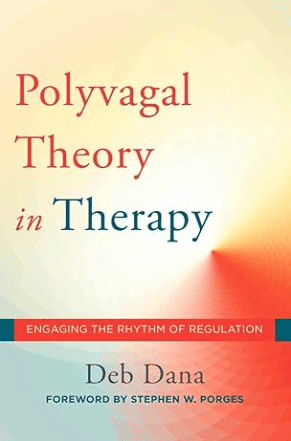
The Polyvagal Theory in Therapy: Engaging the Rhythm of Regulation by Deb Dana
This book offers therapists an integrated approach to adding a polyvagal foundation to their work with clients. With clear explanations of the organizing principles of Polyvagal Theory, this complex theory is translated into clinician and client-friendly language. Through exercises that have been specifically created to engage the regulating capacities of the ventral vagal system, therapists are given tools to help clients reshape their autonomic nervous systems.
“Deb Dana has a gift for translating the science of polyvagal theory into practical, accessible language for clinicians,” says Rebecca Knowles, OTD, OTR/L, RYT. “This book is an essential read for anyone applying principles of polyvagal theory to their life and work.”
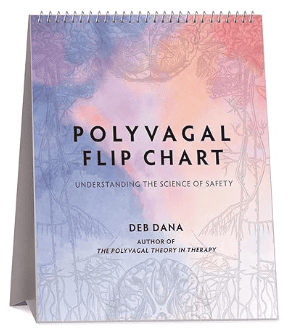
Polyvagal Flip Chart: Understanding the Science of Safety by Deb Dana
This flip chart offers therapists an easy, standardized way to support clients in understanding the role of the autonomic nervous system in their lives. Using a flip chart makes psycho-education an interactive experience. Therapists can feel confident in teaching their clients polyvagal theory by following the chart.
Resources for Educators and Pediatric Providers

The Polyvagal Path to Joyful Learning: Transforming Classrooms One Nervous System at a Time by Dr. Debra Em Wilson
School consultant Debra Em Wilson introduces Polyvagal Theory to educators and shows how using PVT-guided strategies can help create optimal learning environments. When school staff understand the role of the nervous system in learning, they can better help students develop the skills leading to increased resilience, adaptability, and flexibility: essential qualities for social, emotional, and academic success.
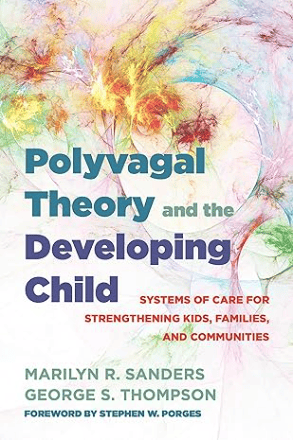
Polyvagal Theory and the Developing Child: Systems of Care for Strengthening Kids, Families, and Communities by Marilyn R. Sanders, George S. Thompson
In this powerful book, pediatrician and neonatologist Marilyn R. Sanders and child psychiatrist George S. Thompson offer readers both a meditation on caregiving and a call to action for physicians, educators, and mental health providers. By attending to the lessons of polyvagal theory—that adult caregivers must be aware of children’s unconscious processing of sensory information—the authors show how professionals can play a critical role in establishing a sense of safety even in the face of dangerous, and sometimes incomprehensibly scary, situations.
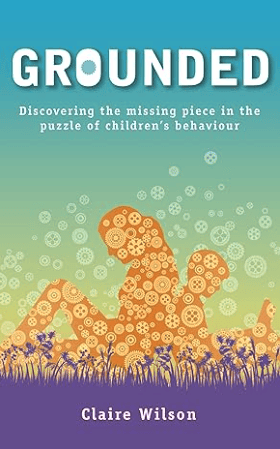
GROUNDED: Discovering the Missing Piece in the Puzzle of Children’s Behaviour by Claire Wilson
The latest science of the nervous system, human survival interactions, neurophysiology and Polyvagal Theory are all brought to life and made accessible for any adult to understand. Packed with relatable, real-life stories of children interacting with adults in the classroom and at home it is a must-read for teachers, parents, and therapists. A book with a message that is born out of 25 years of Claire Wilson’s clinical, educational and advisory experience, GROUNDED combines understanding with solutions and easy-to-apply practical tips.
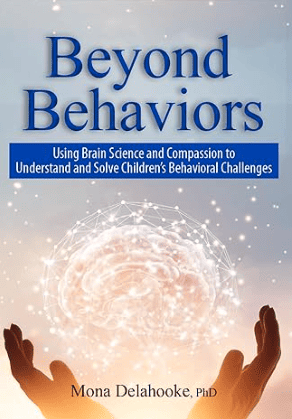
Beyond Behaviors: Using Brain Science and Compassion to Understand and Solve Children’s Behavioral Challenges by Mona Delahooke
In Beyond Behaviors, internationally known pediatric psychologist, Dr. Mona Delahooke describes behaviors as the tip of the iceberg, important signals that we should address by seeking to understand a child’s individual differences in the context of relational safety.
“I like this book because it provides a foundation for supporting parents and professionals to make a paradigm shift away from behavior management and toward understanding where behavior comes from and how it serves the child,” says Kelly Beins, OTR/L. “Too often the emphasis when working with children is on ‘fixing’ or stopping undesirable behaviors. This book provides a polyvagal informed lens for how to collaborate and connect and how to make the child the focus instead of behavior.”
Learning About the Vagus Nerve
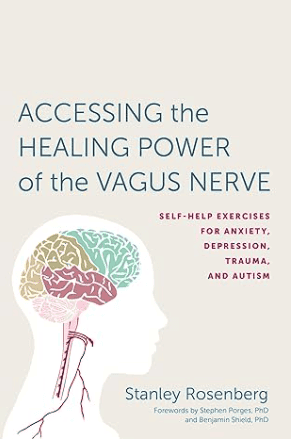
Accessing the Healing Power of the Vagus Nerve: Self-Help Exercises for Anxiety, Depression, Trauma, and Autism by Stanley Rosenberg
This practical guide to understanding the cranial nerves as the key to our psychological and physical well-being builds on Stephen Porges’s Polyvagal Theory—one of the most important recent developments in human neurobiology. Drawing on more than thirty years of experience as a craniosacral therapist and Rolfer, Stanley Rosenberg explores the crucial role that the vagus nerve plays in determining our psychological and emotional states and explains that a myriad of common psychological and physical symptoms—from anxiety and depression to migraines and back pain—indicates a lack of proper functioning in the vagus nerve.
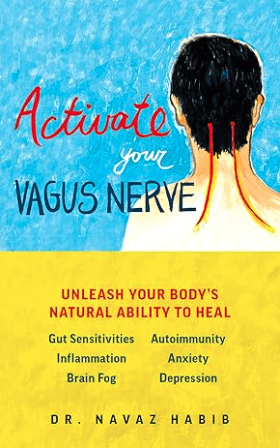
Activate Your Vagus Nerve: Unleash Your Body’s Natural Ability to Heal by Dr. Navaz Habib
This helpful guide provides all the tools you need to understand and heal your vagus nerve, the rest, digest and recovery system. You’ll learn simple yet powerful techniques to address a variety of ailments health challenges, like inflammation, gut sensitivity and brain fog, from their root causes originating with the vagus nerve.
Modality-specific Resources
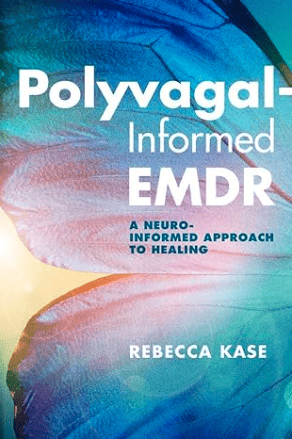
Polyvagal-Informed EMDR: A Neuro-Informed Approach to Healing by Rebecca Kase
Polyvagal Theory and EMDR are two well-respected theoretical and practical models with immense implications for therapeutic practice. Polyvagal-Informed EMDR outlines a comprehensive approach for integrating Polyvagal Theory into EMDR Therapy. Individually, each model offers powerful pathways to healing. Combined, these models supercharge therapy and the recovery process.
Provider Self-care Resources
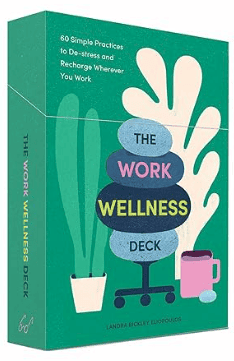
The Work Wellness Deck: 60 Simple Practices to De-stress and Recharge Wherever You Work by Landra Bickley Eliopoulos, Gracia Lam
Burnout is common in today’s work culture. Whether due to long hours, excessive workloads, or lack of work-life balance, we all know someone who has felt overwhelmed at work. Enter The Work Wellness Deck: 60 actionable suggestions that will restore a sense of well-being in the workplace and banish burnout once and for all.
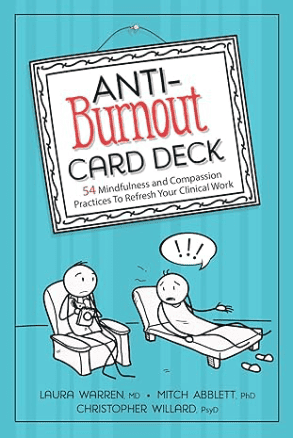
Anti-Burnout Card Deck: 54 Mindfulness and Compassion Practices To Refresh Your Clinical Work by Laura Warren
Stay attuned and empathic toward even the most challenging clients. The Anti-Burnout Card Deck will help you let go of emotional residue and countertransference between sessions, and finish each day with a sense of satisfaction.



 © 2025 Unyte Health US Inc.
© 2025 Unyte Health US Inc.